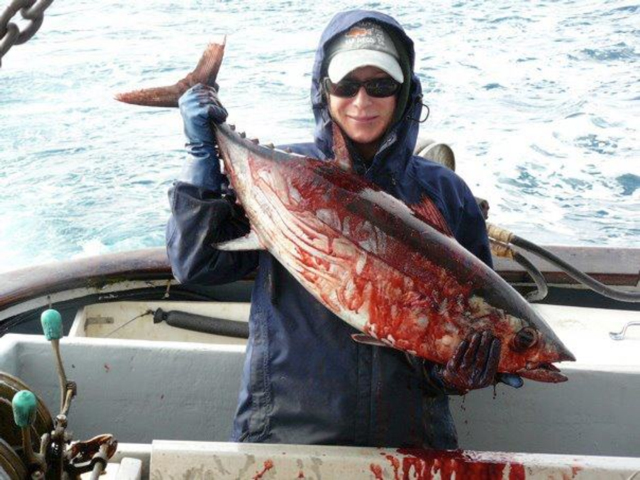Landings for West Coast albacore tuna fell below 2017 landings and below the 20-year average in 2018. The troll industry hopes enough market-sized, young fish will recruit into the fishery in time for this year’s season.
“There were a lot of small fish around last year,” said Wayne Heikkila, executive director of Western Fishboat Owners Association in Redding, Calif. By small fish, he’s referring to 7-pound fish that the industry hopes will grow to 12- to 15-pound fish in time for the 2019 season, which peaks in July.
According to data from PacFIN, trollers caught and sold 6,950.3 metric tons of albacore in 2018, which is down by 7 percent from 2017 landings of 7,467.7 metric tons. Ex-vessel prices also fell by about 23 percent from the $2.12 per pound that processors paid in 2017 to $1.63 per pound in 2018. Fleet revenues also fell by about 28 percent from $34.83 million to $24.93 million.
Though it’s difficult to identify price-depressing factors in the world market of tuna, other countries contribute cheaper product into avenues that compete directly with U.S. albacore.
As for declining production, an emergent theory is that albacore in the North Pacific may migrate to the South Pacific in their distribution — and reverse the process — every 30 years. The transhemispherical migration in the albacore population begs for further validation via tagging studies. The premise stems from the harvest of a single fish tagged off the coast of Oregon three years ago and harvested in the deep South Pacific last year.
The albacore harvest in the South Pacific, meanwhile, began at a robust pace this season (2019), and the nine boats that went south landed around 4,000 pounds a day from January to March.
For those trollers who stayed closer to home, the fishing ended abruptly on Sept. 5, said Heikkila.
When the bite shuts down for trollers, some of the boats in the fleet switch from artificial lures to fishing with poles and bait, which prolongs profitable fishing up until October.







